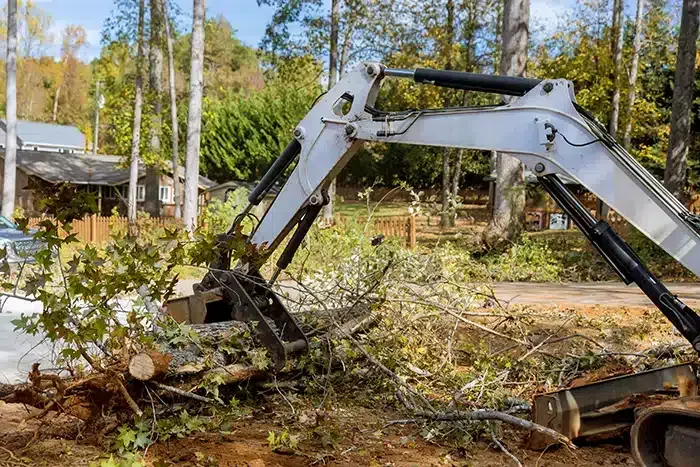Santa Clarita Tree Service
(661) 338-5661

Trees are a beautiful and valuable part of any property, offering shade, aesthetic appeal, and environmental benefits. However, when a tree becomes hazardous due to disease, structural instability, or storm damage, it can pose serious risks to people, property, and public safety.
In such cases, tree removal is not just a matter of landscaping—it’s a critical safety service. Understanding the dangers of hazardous trees and the role professional removal plays is essential for every homeowner, property manager, or business owner who wants to protect their investment and maintain a safe environment.
Prevents Personal Injury and Property Damage
Hazardous trees can fail suddenly, especially under stress from weather or disease, making them a top safety concern.
- Avoids falling limbs and collapsing trees: Large branches or entire trees can fall without warning, causing injuries or severe damage to vehicles, fences, roofs, or outdoor living areas.
- Protects high-traffic areas: Trees near sidewalks, driveways, playgrounds, or workspaces need to be evaluated and removed if they pose a threat to pedestrians or residents.
- Minimizes liability risks: If a hazardous tree on your property causes harm to others or their property, you may be held financially responsible. Timely removal reduces the risk of legal claims.
Addresses Tree Disease and Decay
Tree diseases and internal decay can severely weaken a tree’s structure, often without obvious signs until it’s too late.
- Prevents spread of disease to nearby trees: Infected trees can pass pathogens to healthy ones, threatening the health of your entire landscape if not removed quickly.
- Eliminates structurally compromised trees: Decayed roots, hollow trunks, and fungus-covered bark can all indicate major internal damage that makes a tree unstable and dangerous.
- Stops pest infestations: Hazardous trees often attract termites, beetles, or ants. Removing the tree can eliminate the food source and stop pests from moving on to your home or other trees.
Improves Storm Preparedness and Recovery
Severe weather events like high winds, heavy rain, or snow can turn hazardous trees into major threats.
- Removes storm-vulnerable trees before disaster strikes: Trees that lean, have cracked limbs, or are already weakened by disease are more likely to fall during a storm.
- Clears space for emergency response access: Overgrown or leaning trees can block driveways or emergency access points. Tree removal helps keep pathways clear for fire trucks, ambulances, or utility crews.
- Reduces post-storm cleanup costs: Taking care of hazardous trees in advance prevents extensive storm damage and the expensive cleanup that follows.
Protects Buildings, Utilities, and Infrastructure
Trees too close to structures or power lines can be a ticking time bomb, especially if they’re unstable.
- Prevents damage to foundations and roofs: Roots from hazardous trees can invade foundations, sewer lines, or sidewalks, while branches can scrape or fall onto roofs and walls.
- Avoids electrical hazards: Trees growing into power lines may cause outages, sparks, or even fires. Utility companies often recommend or require removal in these cases.
- Protects sheds, garages, and outdoor features: Removing trees that lean toward small structures helps prevent damage to outbuildings, fencing, patios, or garden elements.
Ensures Long-Term Property Value and Aesthetic Appeal
A hazardous tree can detract from your property’s appearance and curb appeal, as well as scare off potential buyers or tenants.
- Improves landscape health and appearance: Removing dead or diseased trees opens up space for healthier plant growth and improves the overall look of your yard or property.
- Increases property marketability: Real estate agents and buyers often see hazardous trees as red flags. Removal helps demonstrate proper maintenance and care for the property.
- Allows room for future development or planting: Taking out dangerous trees creates opportunities for safe landscaping, additions, or outdoor upgrades in the future.
Hazardous trees are more than just an eyesore; they are a genuine threat to safety, property, and peace of mind. Whether due to disease, storm damage, structural issues, or location near critical infrastructure, some trees must be removed to prevent disaster.
By working with certified tree care professionals, you can ensure that dangerous trees are identified and removed safely and efficiently. Timely tree removal isn’t just good maintenance—it’s a smart investment in the security and value of your home or business.